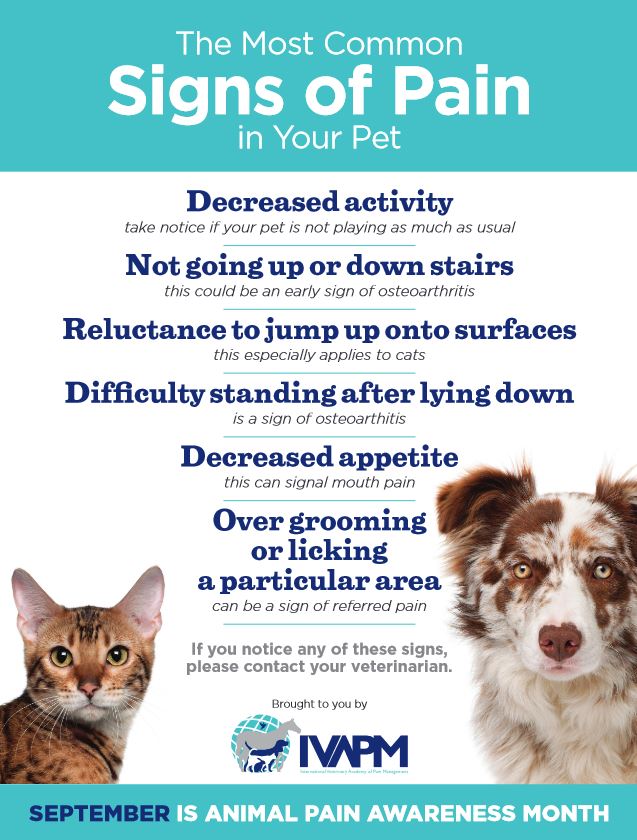Is your pet in pain? Know the signs.
We’re back with another pain themed VetStem blog as we commemorate Animal Pain Awareness Month. A few weeks ago, we discussed the types of pain in animals as well as the importance of pain management. This week, we will look at the signs and symptoms of pain in pets.
Types of Pain in Pets
To recap last week’s blog, there are several types and classifications of pain. Acute pain is characterized by pain that has come on suddenly or has only been present for a short period of time such as from a surgery or trauma. Chronic pain comes on gradually and may be more subtle, such as pain from osteoarthritis. Additionally, pain can be nociceptive (from noxious stimulation), inflammatory (from acute or chronic inflammation), and neuropathic (from damage to an element of the nervous system).
Signs and Symptoms of Pain in Pets
In order to determine if our pets may be in pain, it is important to know what to watch for. Signs and symptoms of pain in pets may vary based on the individual animal as well as the species. For instance, dogs often show arthritic pain by limping or favoring a leg. In contrast, cats do not typically present with lameness or limping and instead will be less willing to jump and/or have shorter jumps.
It is also important to note that animals may hide their pain. This is especially true of cats, who tend to be masters at hiding their pain. Fortunately, the IVAPM has come up with a list of common signs of pain in both cats and dogs. According to the IVAPM, the most common signs of pain are:
- Decreased activity – Take notice if your animal is not playing as much as usual
- Not going up or down stairs – This could be an early sign of osteoarthritis
- Reluctance to jump onto surfaces – This especially applies to cats
- Difficulty standing after laying down – This is a sign of osteoarthritis
- Decreased appetite – This can signal mouth pain
- Over grooming or licking a particular area – This can be a sign of referred pain
Additionally, the IVAPM has provided a checklist for both dogs and cats that can be used to help you and your veterinarian determine if your pet is in pain.
While September is Animal Pain Awareness Month, it’s a good idea to keep an eye out for these potential signs of pain at all times. If you notice that your pet is exhibiting any of these signs, a trip to your vet may be in order.

